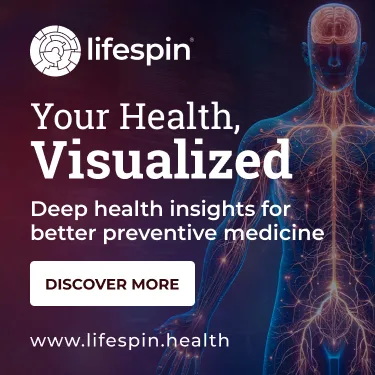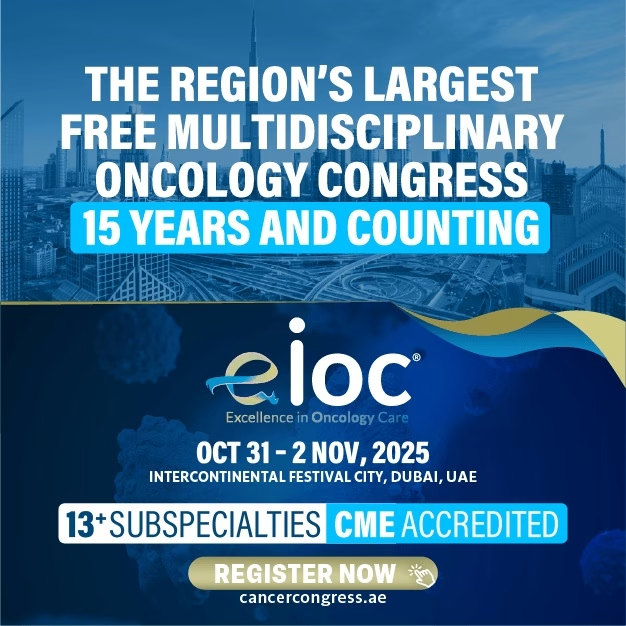Smart pacemakers, radiomics, machine learning, robotics, and similar technologies are all trending topics in the healthcare sector. To learn more about these hot topics and gain a unique perspective on digital and sustainable healthcare, MedEdge MEA interviewed Prof. Dr. med. Mathias Goyen, Chief Medical Officer EMEA for GE HealthCare. Dr. Goyen’s responses are informative and a must-read for valuable insights.
MedEdge MEA: How are you enjoying your current role as CMO (EMEA Region) at GE HealthCare?
Dr. Mathias Goyen: As Chief Medical Officer EMEA at GE HealthCare I oversee clinical strategies, ensuring that the company’s products and services align with the latest medical standards and practices. I work closely with R&D teams to guide the development of innovative medical technologies and solutions. Additionally, I engage with healthcare professionals, regulatory bodies, and other stakeholders to advocate for the adoption of these technologies.
Follow our WhatsApp channel to get more interesting interviews
The role is highly rewarding, offering the opportunity to shape the future of healthcare technology and improve patient outcomes on a global scale. It also involves significant challenges, such as navigating regulatory landscapes, ensuring data security and patient privacy, and fostering innovation within a highly competitive market.
Radiomics, the high-throughput extraction of large amounts of quantitative features from medical images, can reveal patterns that are not visible to the naked eye.
Dr. Mathias Goyen
ME: What is your perspective on AI, machine learning, and robotics in the context of healthcare?
Dr. Mathias Goyen: AI, machine learning, and robotics are transforming healthcare by improving diagnosis, treatment, and patient care efficiency. Here are some key perspectives:
1. Enhanced Diagnostics
AI and machine learning algorithms can analyze vast amounts of medical data, including imaging, genetic information, and electronic health records, to identify patterns and make accurate diagnoses. For example, AI can assist in detecting diseases such as cancer at early stages by analyzing medical images with higher precision than some human experts.
2. Personalized Care
Machine learning models can tailor treatments to individual patients based on their unique genetic makeup, lifestyle, and environment. This personalized approach can improve treatment outcomes and reduce adverse effects by considering factors that traditional methods might overlook.
3. Operational Efficiency
Robotics and AI can streamline hospital operations, from scheduling and logistics to supply chain management. Robots can also assist in repetitive tasks such as medication dispensing and laboratory work, freeing healthcare professionals to focus on more complex patient care tasks.
4. Remote Monitoring and Telemedicine
AI-powered wearable devices can continuously monitor patients’ vital signs and detect anomalies in real-time. Telemedicine platforms, augmented by AI, can provide remote consultations and follow-ups, making healthcare more accessible, especially in underserved areas.
ME: What are your thoughts on the future of smart pacemakers?
Dr. Mathias Goyen: Smart pacemakers represent a significant leap forward in cardiac care, combining the latest in medical technology, data analytics, and connectivity to provide better outcomes for patients. The future of these devices will likely focus on enhancing monitoring capabilities, enabling remote management, and leveraging AI for predictive insights, all while maintaining high standards of security and patient safety.
ME: What advancements in radiology are expected to reshape disease diagnosis and treatment in 2024 and beyond?
Dr. Goyen: Advancements in radiology are poised to significantly enhance disease diagnosis and treatment in 2024 and beyond. Here are some key developments expected to reshape the field:
1. Artificial Intelligence and Machine Learning
AI and machine learning algorithms are improving the accuracy and efficiency of image analysis. These technologies can assist radiologists by quickly identifying anomalies, such as tumors or fractures, that might be missed by the human eye. AI can also prioritize urgent cases, ensuring faster diagnosis and treatment.
2. Integration of Multi-Omics Data
Radiology will increasingly integrate data from genomics, proteomics, and metabolomics with imaging findings. This holistic approach, known as radio genomics, can provide deeper insights into disease mechanisms, helping to tailor personalized treatment plans.
3. Advanced Imaging Techniques
Innovations such as spectral CT, MRI with higher field strengths (e.g., 7T MRI), and advanced PET-CT imaging offer more detailed and accurate images. These techniques can improve the detection and characterization of diseases, particularly in oncology, neurology, and cardiology.
4. Real-Time Imaging and Interventional Radiology
Advances in real-time imaging technologies enable more precise and less invasive interventional procedures. Techniques such as MR-guided focused ultrasound and robotic-assisted interventions are expected to become more common, improving treatment outcomes and reducing recovery times.
5. Quantitative Imaging and Radiomics
Quantitative imaging involves extracting measurable features from medical images, which can be used to predict disease prognosis and treatment response. Radiomics, the high-throughput extraction of large amounts of quantitative features from medical images, can reveal patterns that are not visible to the naked eye.
ME: Building sustainable digital health services: How do you perceive it?
Dr. Goyen: Building sustainable digital health services is essential for creating a resilient, efficient, and inclusive healthcare system. These services require a multifaceted approach that prioritizes patient needs, ensures interoperability, protects data privacy, promotes equitable access, and encourages continuous innovation. By addressing these key areas, digital health can provide lasting benefits to healthcare systems and improve health outcomes on a global scale.



















